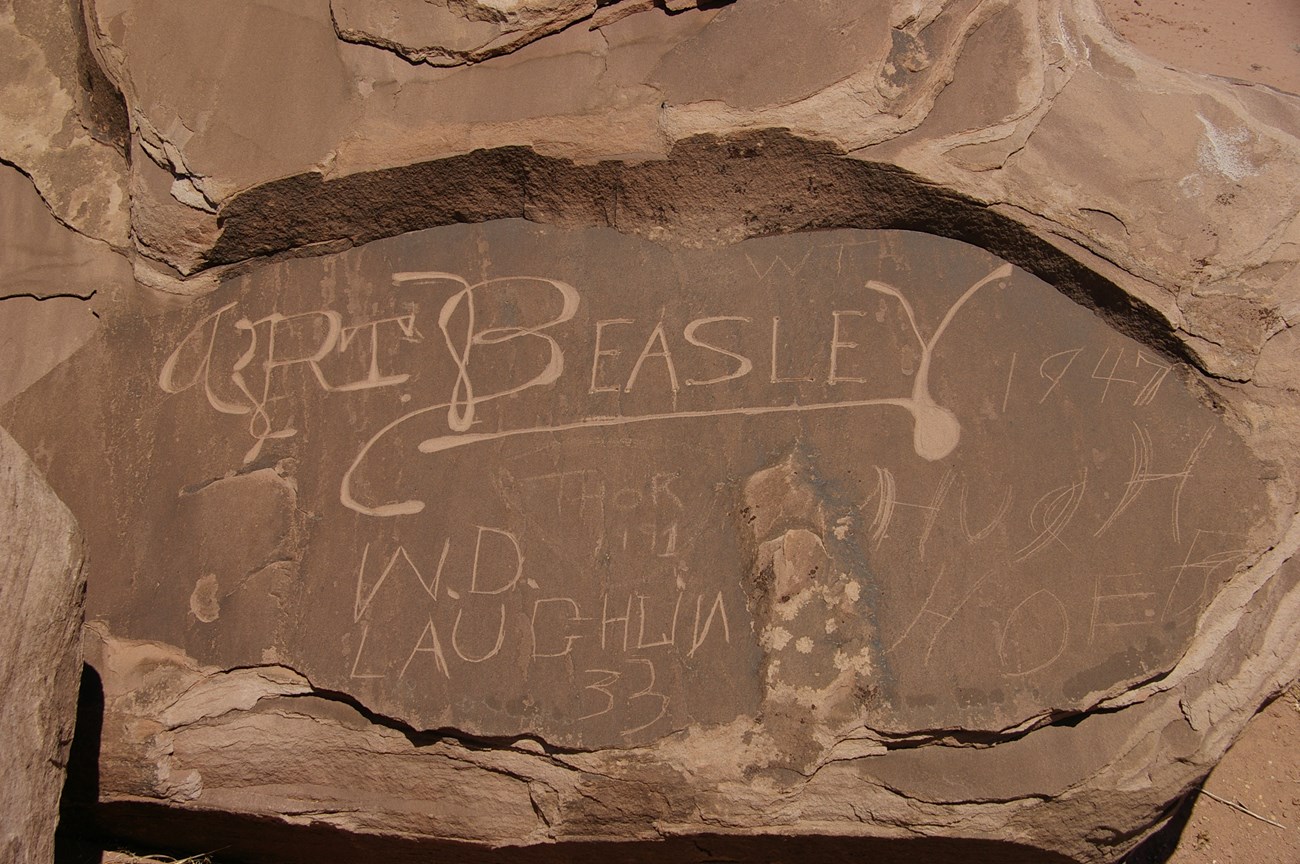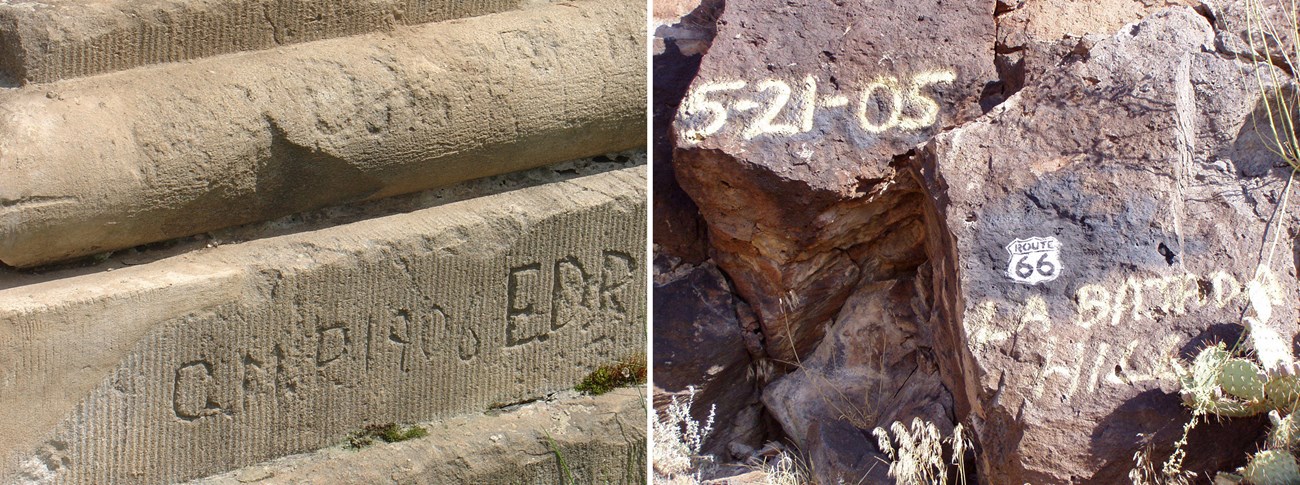Last updated: May 23, 2025
Article
How Were Petroglyphs, Pictographs, and Inscriptions Made?

NPS photo.

NPS photo.
Pictographs are painted on rock. People made paints from pigments ground from minerals and added to a binder to make a paste or liquid. People used calcium carbonate for white, hematite for red, yellow ochre for yellow, turquoise for blue, and charcoal for black. They mixed the minerals with plant or animal oils, saliva, eggs, blood, urine, grease or beeswax to help bind the pigment to the rock. The pigments were applied using tools such as sticks or brushes, or fingers and hands.

NPS photo.

NPS photos.
Graffiti consists of initials or marks, typically from the modern era. It may be carved or painted onto rock. The NPS preserves historic graffiti that is 50 years old or older.
Modern graffiti, however, is a problem across our public lands and is against federal law. People who use paint or carve on rock do irreparable harm to the resources. Please do your part to protect these fragile resources and enable the next visitor to enjoy them.

NPS image.
Think about carving or painting a mark on rock – it's not easy, or fast! Petroglyphs, pictographs, and inscriptions took time, planning, and teamwork to make.
Look closely for clues in the qualities of the rock face itself, the techniques chosen to create rock markings, and the styles or motifs. Consider if people constructed ladders, scaffolds or even a boat, to reach the site. Think about the relationship with the surrounding landscape and the relationship of the image to the sun, to other rock formations, and access points.
Learn more:
